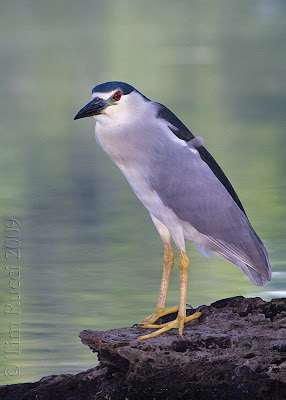66847

This morning after meeting some friends for breakfast, I was watching some birds along the shoreline of an adjacent lake. I noticed a white ibis and a black crowned
night heron fishing along the shoreline, but was particularly interested in the heron. I had my camera in the car, but the longest lens I had with me was a 70-200 f2.8. I had never used this lens with an extender but since it was the only solution available, I tried some shots first with the 1.4x and then later with the 2x extender. All photos in this blog entry were shot with the 2x extender.
night heron fishing along the shoreline, but was particularly interested in the heron. I had my camera in the car, but the longest lens I had with me was a 70-200 f2.8. I had never used this lens with an extender but since it was the only solution available, I tried some shots first with the 1.4x and then later with the 2x extender. All photos in this blog entry were shot with the 2x extender.
I was fortunate under these circumstances to capture a few decent images, although I blurred a few of them due to a combination of shooting at slow shutter speeds, and being crouched down in an unstable shooting position, trying to get down as close to the water level as possible. As always, it's best not to use an extender if you don't need to, but I found that the results were acceptable with both the extenders and the 70-200. It did seem to work a little harder to acquire focus with the 2x, however. Below are a few more photos from this morning.
I tried shooting both with a flash and without, because I feared that the flash may cause a bad red eye situation due to the distance from the bird, since it was mounted directly on the camera as opposed to using a flash bracket. But it only caused a problem in a couple of the photos.
Using the flash was probably the best approach because it allowed me to expose for the background, which had some bright reflections in the middle of dark water, and then use the flash to put some light on the bird.
My goal with flash photography is to make it subtle enough so that it is not obvious to the viewer that flash was used. The horizontal lines you see on the bird in several of these photos are reflections from ripples in the water. All in all, this turned out to be a fun way to spend a couple hours in an unplanned, unexpected opportunity.





Nice shots man!
ReplyDeleteHi Tim,
ReplyDeleteThis is one of my favorite heron bird. I saw it a lot when I lived in Camargue, but I was not photgraphying live at this time of my life!!! I even saw it in Chile last year!! Well done, these pictures are beautiful.
This is an interesting bird, not too common in Virginia, here the Yellow Crowned Night Heron rules. I think I can see the use of the 2X, you commented on this. I never go beyond the 1.4X.
ReplyDeleteWhat lovely birds and they have been captured very well.Great shots!
ReplyDeleteBeautiful birds, not like the drab grey version we have, great shots.
ReplyDeleteTHAT is an interesting looking bird! Wow! The proportions are odd. Thank you for those great pics. And for your explanation on the use of the 1.4X and 2X. :))
ReplyDelete...these photos are gorgeous. I love Black-crowned Night Herons. I use same setup I use on my camera--a 70-200mm lens with a 2x TC. Some day I'll have that 400mm lens, but until then, I'll have to make do. I enjoyed reading your narrative. I've not used a flash. I'll have to give it a try.
ReplyDeleteSo beautiful - love the crisp gleam of his eye! I am so glad that you post your explanations on your shutter speeds - very helpful to an amateur like myself!
ReplyDeleteHi Tim
ReplyDeleteI found you by way of my brothers blog (pawildlifephotographer) and am glad I did. you have an excellent collection of exceptional wildlife photographs here and I have only had time to view a few pages of them.
In my occassional visits to FL I have yet to run into this heron. I enjoyed your explanation of how you made these images. although you may not have had your prefered equipment you certainly obtained some good shots!
Fantastic images of the night Heron Tim. And they look even better when you realize they have been shot with a 70-200 with 2x TC !!!
ReplyDeleteI particularly liked the way you have flash-filled the scene to get every possible detail on the Heron. WOW
Where did you get such a light? Crispy and beautiful colors, as usual. Cheers
ReplyDelete